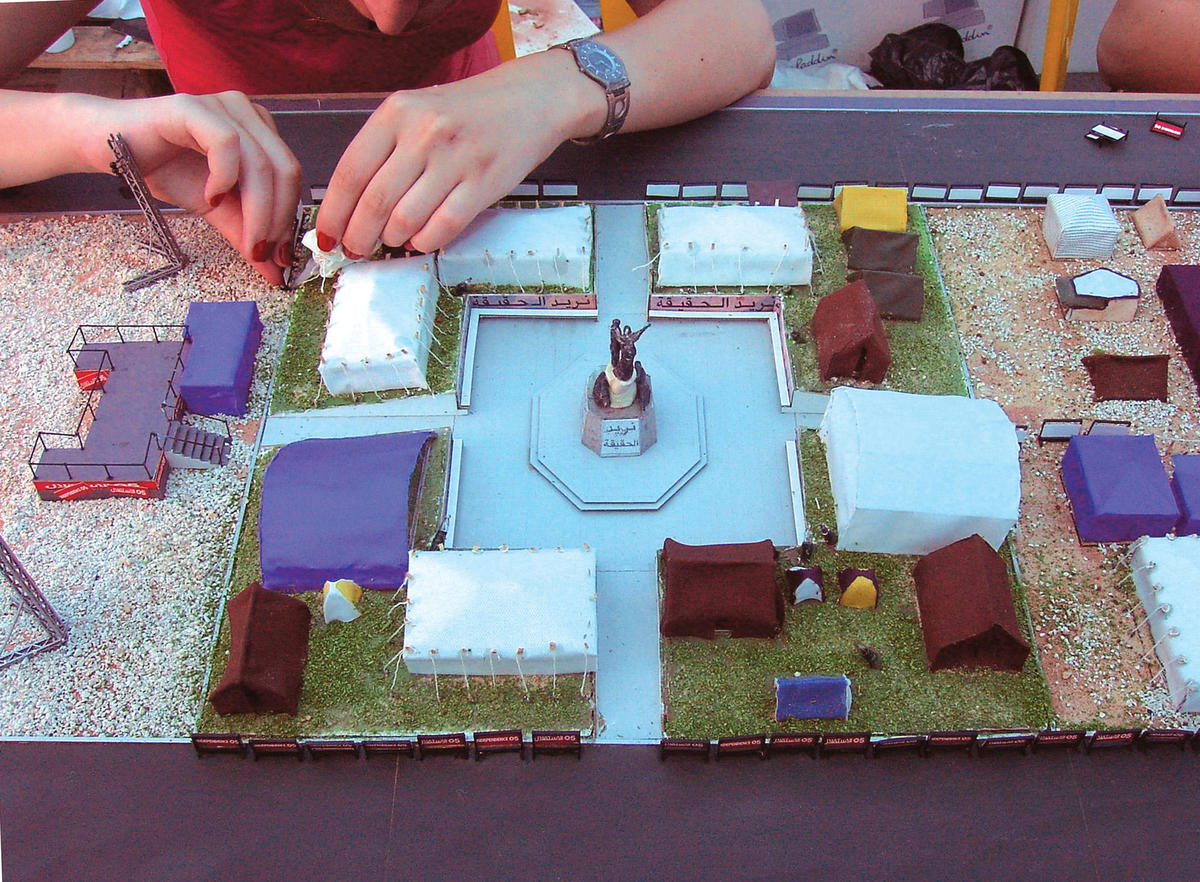
People say that you need a guide in order to understand the workings of Lebanese politics. It’s absolutely true, but even a guide or a book of rules (behind all the apparent chaos, strict rules are in operation) will not be of much help nowadays: The Socialist Party (or Walid Jumblatt’s party) and the Lebanese Forces, a rightwing Christian formation, are both running for the elections in Mount Lebanon, on the same list, asking people who cast their ballots to forget that they were responsible for one of the worst chapters of the Lebanese wars. Michel Aoun, an ex-general and possibly a war criminal, came back after a long exile and was given a hero’s welcome by tens of thousands of people, while Hassan Nasrallah, Hizbullah’s leader, declares that the Party of God has 12,000 rockets and that whoever thinks of disarming the party will be fought in a Karbala-esque way. Nasrallah didn’t need to tell the cheering crowds how Hizbullah will use these rockets, or what its long term strategy is — he was shouting, the crowd was happy, and Walid Jumblatt was nodding his head. That should be enough to guarantee a few seats in the new parliament, so why be a party-pooper and spoil people’s joy?
What an outside observer needs to know now is that the 2005 elections will serve to renew the existing political class, with a few insignificant changes here and there (like replacing the Baathist Assem Qanso by the Phalangist Amin Gemayel). Politicians didn’t feel the need to change their image; Aoun even managed to transform this non-change into a quality: He is the man who did not change his mind in fifteen years (whether this is true or not is another story). He is constant, pure and reliable, with an unshakable perseverance. Upon his return he went to Martyrs’ Square, where his supporters gathered, he stood the exact same way he used to stand back in 1989, and began with the exact same words: “Oh great people of Lebanon!” The crowds cheered, of course, and although they did notice that Aoun was standing behind bulletproof glass this time around, no one thought much of it (Beirut is too fast for consciousness). But something was different: Maybe it was the caricature/déjà-vu effect, or maybe it was the fact that standing behind the glass transformed Aoun into an automaton-like figure. (His gestures helped: the upright military position, the quick jerking of the head to the sides as if he was looking at someone who didn’t exist, the sudden smiles that appeared and disappeared for no particular reason, etcetera). An automaton behind bulletproof glass, an automaton behind a shop window display, oddly resembling those old Atget pictures of mannequins that the surrealists loved so much. The crowd before me on the television was suddenly transformed into an autistic mass of bodily proximity and mental distance.
This did not really come as a surprise, however. One strong indication among many was inscribed in the structure of Martyrs’ Square itself, specifically in what became known as “Tent-City,” where hundreds (thousands?) of student demonstrators erected tents and decided to remain in the square until their demands were met. The Tent-People — who, by the way, have never heard of George Bush’s “Cedar Revolution” — remained in their city for eighty days. During that time, the square was transformed into a skyscraper, a horizontal one; each political group or student organization was allocated a tent, and the outside observer could not distinguish between the tent of this group or that one (almost all were blue). Tent-City achieved spatial lobotomy, where the outside spaces cease to “express” the complexities of the inside (a quasi-moral obligation in western architecture). Make no mistake: Tent-City is not merely an accumulation of protestors’ tents. Each tent represents a certain idea of Lebanon, sometimes in complete contradiction with all the others, but the “skyscraper” was held together by the uniformity of the tents and by the fact that all ideas referred to the same entity, Lebanon, a country in perpetual formation. Every evening, the Tent-People would gather in one of the tents and their conflicting ideas about their country would be debated. Hovering above peoples’ heads, ideas clashed, and each idea was contaminated by others, leaving the unconscious participants (as I said, Beirut is too fast) completely dazzled by their sudden willingness to be impure. Astonishingly, very little of this hectic activity spilled outside of the skyscraper. Maybe this was for the best; perhaps any spillage would threaten the hysterical hovering of ideas inside. The contaminated ideas were too fragile to face the puritanism of the outside world, where ideas of what Lebanon was, is, and will be could only coexist without getting soiled by each other (Lebanon is, after all, the country of coexistence). Finally, after eighty days, the skyscraper was quietly dismantled (after continuous pressure from the puritans), preparing the space for the autistic mass that was to greet General Aoun a few days later. A couple of weeks passed, and the results of the contest of ideas over the development of Martyrs’ Square were published. None of the plans (which were all struck by the architectural disease of incomprehensible graphics) acknowledged the ghost skyscraper that existed exactly where their interventions were planned. Tent-City was relegated to the realm of ghostly universes that inhabit Beirut, waiting for a chance to manifest itself among the living.
To conclude, a quote from Paul Éluard: “There is another world, and it is in this one.” Lebanon is the country were the two worlds meet, not the East and the West, but that of the living and that of the dead. Two hundred thousand of them.
To Laurie, May 2005